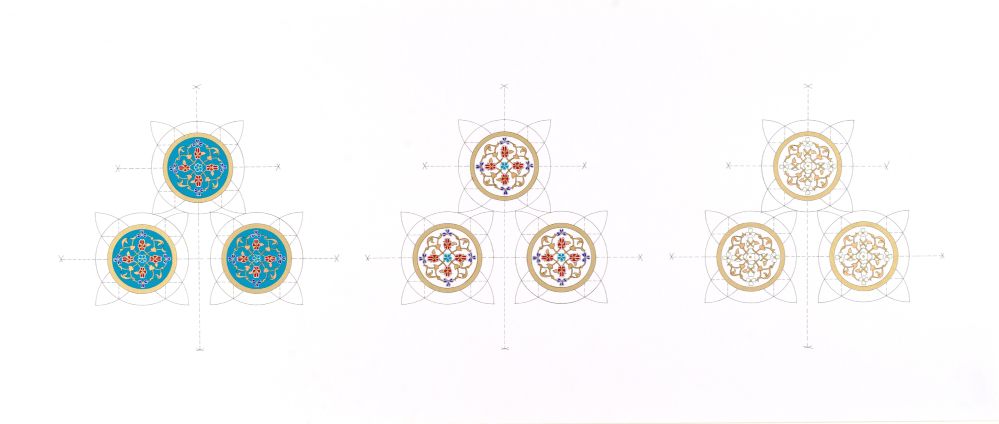Scripts of Gold
Folio from a Qur’an Manuscript. Chapter 114, Al-Nas (The Mankind). North Africa or Iraq, 9th-10th century. Gold, ink, and opaque watercolor on parchment H. 16 cm × W. 25 cm The Aga Khan Museum, AKM478
In the spiritual arts of the Muslim world, gold has always played an important role due to its unique ability to evoke the light and glory of the Divine with its otherworldly luster and sheen. On this wonderful page from a rare, early Islamic Qur’an, both the calligrapher and the artist responsible for the ornamentation joined forces in their usage of gold pigments to write and beautify the final surah (chapter) of the Holy Qur’an, Al-Nas (114): ‘Say, I seek refuge in the Lord of humankind, the Master of humankind, the God of humankind, from the evil of the lurking whisperer, who whispers into the hearts of humankind from among jinn and humankind.’
Qur’an manuscripts written in gold are relatively rare, perhaps not least because this most precious metal was always viewed with ambiguity by Muslim traditions.
Both the Holy Qur’an and the Prophet (Peace bbe upon Him) warn against its hoarding, its impious use for worldly, ungodly pursuits, and its ruinous temptations. Nevertheless, from the late 7th/early 8th century onwards, Qur’an manuscripts written and illuminated in gold came to be commissioned and distributed all across the Muslim world. They were carefully designed to rival, if not surpass, the lavish scriptures of other monotheistic faiths and act as symbols of Islam’s spiritual and political supremacy, with their calligraphy seen by their patrons as a medium of divine illumination and enlightenment.
Written by Special Guest Contributor
Dr. Ulrike Al-Khamis, Director and CEO at the Aga Khan Museum, Toronto. In each issue, we feature a special treasure from the Aga Khan Museum, one that tells a story, captures a moment and inspires conversation.


